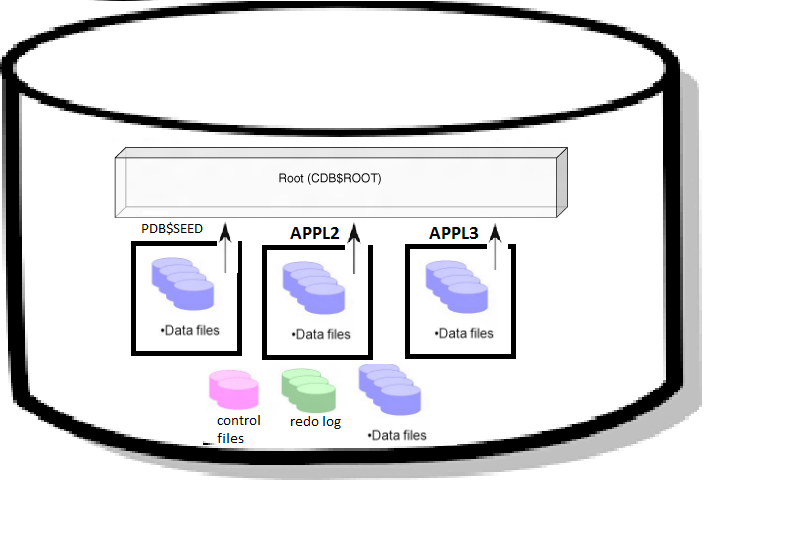In the previous article, we have explored Multitenant architecture.
We have heard this word container database and pluggable database many times after 12c came into the market. Today we will see what does it mean by a pluggable database and container database.
Container Database and Pluggable Database : In a multi-tenant architecture, there will always be one container root database. Which will work as base database and all other database having application data will work as a pluggable database , as tenant of this container database.
We can see in above diagram in single container database CDB$ROOT I have plugged three pluggable database :
- PDB$SEED
- APPL1
- APPL2
With Above diagram we can see the following things :
- Redo log files are common for all PDBs.All PDB in the CDB share archivelog mode of CDB.
- Control Files are common for all PDBs. Common control files are responsible for all structural changed for any pluggable database or container database.
- Each container has its own data dictionary stored in its proper SYSTEM tablespace, containing its own metadata, and a SYSAUX tablespace.
- The PDBs can create tablespaces within the PDB according to application needs.
- Each datafile is associated with a specific container, named CON_ID.
Now let us understand each container shown in Diagram.
- CDB$ROOT
CDB$ROOT is the first container database created when we create CDB in 12c Multitenant architecture. The CDB root is a system-supplied container that stores common users, which are users that can connect to multiple containers, and system-supplied metadata and data. The source code for system-supplied PL/SQL packages is stored in the CDB root.
- PDB$SEED
It is the system supplied a template that is used to create another PDB. Creating another pluggable database using PDB$SEED is a very fast operation.
- Pluggable Database
Pluggable database contains application data. It contains permanent and temporary tablespace and local users and role. Local users created in a specific pluggable database are not visible to any other pluggable database of that container.We can do the various operation on the pluggable database. We can create , clone ,plug , unplug or proxied pluggable database.
Stay tuned for More articles on Oracle Multitenant
Thank you for giving your valuable time to read the above information.
If you want to be updated with all our articles send us the Invitation or Follow us:
Telegram Channel: https://t.me/helporacle
Skant Gupta’s LinkedIn: www.linkedin.com/in/skantali/
Joel Perez’s LinkedIn: Joel Perez’s Profile
LinkedIn Group: Oracle Cloud DBAAS
Facebook Page: OracleHelp


